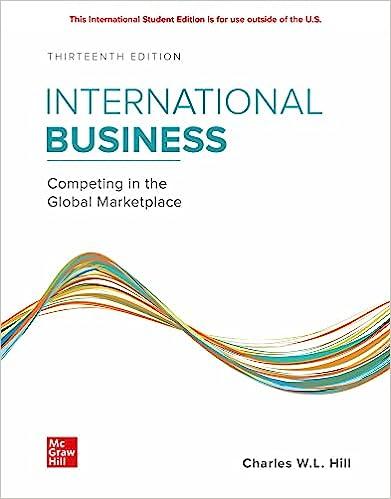Founded in 1966 by Pierre Bellon in France, Sodexo (sodexo.com) is the worldwide leader in providing a
Question:
Founded in 1966 by Pierre Bellon in France, Sodexo (sodexo.com) is the worldwide leader in providing a range of “quality of life” services, including workplace design, onsite food provision, facilities management, cleaning, health care, prisoner rehabilitation, employee benefits and rewards, and personal and home services. The company has 425,000 employees in 80 countries, serves 75 million customers every day, and generates more than $23 billion in revenues annually. Headquartered in France, 43 percent of its revenues are generated in North America; 11 percent in the United Kingdom; 30 percent in continental Europe, including France; and 16 percent in the rest of the world.
Sodexo is well known for its commitment to building a globally diverse workforce and was ranked number 6 in the world in Diversity Inc’s 2017 list of the top 50 companies for workforce diversity (although the company dropped out in 2018). Sodexo’s commitment to workforce diversity derives from a deeply held belief that there is a relationship between workforce diversity and company performance. This belief has been confirmed in a recent study by McKinsey and Company that found that companies in the top quartile of gender and ethnic diversity were 35 percent more likely to have financial returns above their national industry median. Sodexo sees diversity as a marketplace differentiator that is important for many of its clients, who are themselves diverse. Diversity initiatives can also be used to attract top talent.
Moreover, bringing a diverse perspective to bear on problems can improve decision making and result in innovative solutions for clients and customers.
Sodexo focuses on five key areas of diversity: generations, sexual orientation, disabilities, culture and origins, and gender. Globally, Sodexo’s board of directors is 50 percent female, and 31 percent of its global executive team are women, as are 30 percent of its top 1,400 senior leaders. CEO Michel Landel would like 40 percent of all senior leaders to be women by 2025. Some 60 percent of managers at Sodexo are also people of color.
Sodexo translates its commitment to building a diverse workforce and management team into practice through a number of mechanisms. It starts at the top with CEO Denis Machuel, who also chairs the company’s Diversity Leadership Council, which sets companywide diversity priorities and oversees corporate staffing and diversity training programs. The company then decentralizes authority to develop and fine-tune programs and implement them to managers in each country. Each country reports to a regional Diversity Leadership Council (North America, Europe, South America, etc.) that is chaired by the CEO for that region. The company allows each country to establish its own local diversity initiatives while also requiring them to participate in some corporate initiatives, such as diversity training.
This decentralized approach can result in varying progress throughout the company, reflecting different national conditions. As the company’s chief diversity office in the United States explained, “Even though we’re more advanced in the U.S. around diversity efforts, we’re really not able to necessarily use the successes to engage the rest of the organization, because everything happens from the ground up. For each of the 25 countries [in Europe], we have . . . to start from the ground and build the diversity efforts so they have more ownership of it. Each country feels that . . . if it’s not made here [locally] it’s rejected.”7 At the same time, Sodexo has put a Cross Market Diversity Council in place to make sure good ideas can be shared across the company.
To drive home the importance of diversity, Sodexo measures the performance of individual managers against a diversity scorecard that includes quantitative and qualitative metrics and can be varied by country to account for different cultural contexts. Twenty-five percent of the annual bonus of executive team members and 10 to 15 percent of the
bonuses for senior and mid-level managers are connected to how they perform on the diversity scorecard metrics.
Questions
1. How might building a more diverse global workforce help Sodexo achieve high performance?
2. What barriers do companies like Sodexo face when trying to increase workforce diversity in their global operations?
3. How does Sodexo implement its policy of increasing the diversity of its global workforce?
4. Evaluate Sodexo’s diversity policy. Is the company doing the right thing? Are the right policies in place? Are there other things the company might do?
5. Sodexo’s strategy is to decentralize authority to develop and fine-tune programs and implement them to managers in each country. What are the benefits of this approach? What are the potential drawbacks?
Step by Step Answer:

ISE International Business Competing In The Global Marketplace
ISBN: 9781260575866
13th International Edition
Authors: Charles Hill





